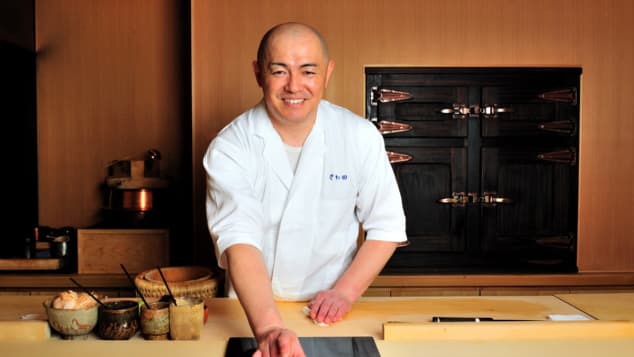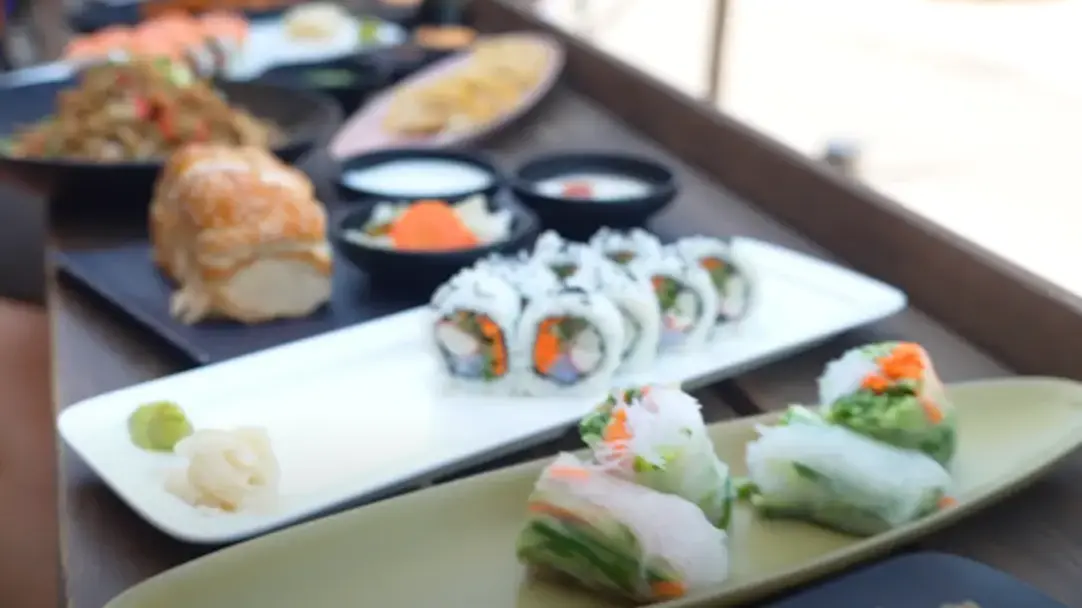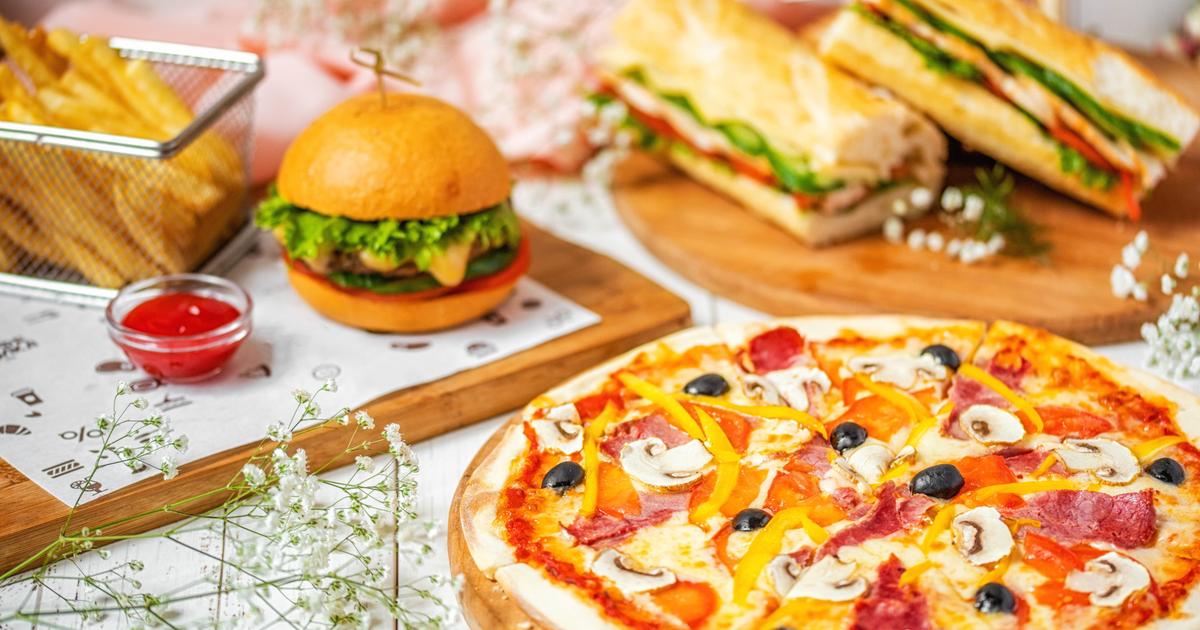Sushi and mercury: what are the risks?
0:57
Tokyo (CNN) -
In theory, sushi is something simple that can be enjoyed almost however you want.
You can eat it standing or sitting, with your hands or with chopsticks, with soy sauce, mixed with wasabi, in one bite or several.
However, if you want to eat like a native of Tokyo, remember that the etiquette changes depending on where you are.
Whether you're eating at an inexpensive chain restaurant (which is closer to the street origins of the dish) or the fine dining establishments in Tokyo's Ginza neighborhood, the following recommendations can distinguish novices from those insiders.
The origins of sushi in Japan date back to the 10th century. Narezushi, the earliest form of this famous food, was made from fermented fish that was preserved with salt and raw rice.
Is it healthy to eat sushi?
It depends on how you are prepared
Edomae (Tokyo style) sushi, which is what most are familiar with today, is believed to have originated in the 19th century.
It usually revolves around nigiri, fish with pressed rice, which can carry several dozen types of seafood and other ingredients, not just fish.
The training of sushi chefs is intense and requires many hours of work.
Chefs are typically apprentices for several years before they are allowed to handle more expensive cuts of fish.
advertising
With this in mind, let's start at the top: Sushi Sawada, located behind Tokyo's most prestigious junction, Ginza 4-chome.
With two Michelin stars and only seven places, Sawada is a sanctuary of sushi and the continuous search for perfection by the master Koji Sawada.
Sawada seasons her ingredients with her own soy sauce mix or a pinch of sea salt before combining them over rice, so she says they don't need to be dipped in soy.
Koji Sawada's eponymous restaurant is a sushi sanctuary.
Noriko Yamaguchi / CNN
But since the customer is the king / queen, Sawada provides sauce on request.
He suggests that the best way to use it is to first take the sushi and then flip it over and wet the side of the fish.
There is a practical reason to invert the sushi: the rice will fall apart if it is dipped directly.
It will also absorb too much sauce, ruining the flavor balance.
The flavor is better if only the fish comes into contact with the sauce.
Then put it in your mouth.
"The fish should be the first thing to touch the tongue," says Sawada.
Most sushi-ya (sushi restaurants) expect customers to dip their sushi in soy, so you will find sauce dishes on the counter.
Soy sauce is called murasaki, which means "purple" in the language of sushi.
https://cnnespanol.cnn.com/wp-content/uploads/2021/09/210707122145-desktop-sushi-tips-loop-4.mp4
Moderation in wasabi and other helpful practices
Each sushi-ya will give you a personal o-shibori (hand towel) to wipe your fingers before eating and between bites.
Along with the soy sauce there will probably be a pot of sweet pickled ginger, known as gari, to refresh the palate.
Use your chopsticks to take some and place it on your individual sushi board, called a geta because of its resemblance to a wooden clog of the same name.
The chef usually adds grated wasabi, Japanese horseradish, to the block of rice while pressing the sushi.
Feel free to order your sushi without wasabi ("Wasabi nashi kudasai") if the herb is too spicy for you.
Or if you want, order more, although keep in mind that an old school sushi master may frown if you ask for more wasabi, as he will consider that his creation has the right seasoning.
Once again, the customer is the boss, although it should be noted that excess wasabi is a good indicator of a novice, as it will dominate the flavor of the fish.
Also, although wasabi can be mixed with soy sauce to dip sashimi (raw fish without sushi rice), this is not usually done with sushi.
Chopsticks: pros and cons
Eating with your hands has something visceral about it, and in the case of people who eat sushi, this practice may also suggest that they are a casual and carefree person.
Sawada understands this, and prefers that her sushi is not handled with chopsticks, although she provides them.
"The best are the hands," he says.
"How to eat curry in India".
https://cnnespanol.cnn.com/wp-content/uploads/2021/09/210707122134-desktop-sushi-tips-loop-3.mp4
However, at the cheap and cheerful Magurobito ("The Tuna Boys") in Asakusa, chef Goh Saito says, "Today almost everyone uses chopsticks. It's for hygiene."
Several years ago I took some classes with Tokyo culinary instructor Yumi Sone.
She says that she prefers chopsticks for their elegance, and even finds that eating with her hands is a bit affected when practiced by anyone to whom it is not natural.
"But chopsticks can be tricky when you dip sushi upside down," he agrees.
Another reason not to use chopsticks is that the block of rice in the best sushi is often loosely molded.
Sawada describes his method as "a lot of air between the grains."
It's what helps create your famous melt-in-your-mouth sensation.
Chopsticks can compress loose rice grains and alter the texture, or you can lose their grip, which could be a disaster.
A $ 5,800 Japanese whiskey given to Pompeo is lost, according to a State Department document
Ask and avoid making a fool of yourself
Many of the best sushi-no longer have menus, but instead offer different price ranges for set dishes;
their food is closer to a tasting menu of the best of that day.
You can also order single plates, although they are more expensive.
Instead of lining up a range of sushi, the master will offer each piece as it is made.
Latin American dishes that conquered the United States and how they got there
It is not polite to leave a freshly presented piece of sushi for too long in front of you, as the temperature, texture and humidity change.
In this sense, a sushi-ya is more demanding of the customer than a typical restaurant: the diner also plays a role.
https://cnnespanol.cnn.com/wp-content/uploads/2021/09/210707121931-desktop-sushi-tips-loop-1.mp4
Feel free to ask them to repeat something you especially liked.
A very common misstep is when a client does not inform the teacher in advance of their preferences or allergies.
So when it comes to foreign customers, restaurants like Sawada or the famous Kyubey, also in Ginza, can ask to speak to their concierge or a Japanese before accepting a reservation.
The ingredients that usually provoke reactions are shrimp (ebi);
shellfish (kai) and sometimes uni (pronounced oohni), sea urchin.
Some people dislike the "fishy taste" of items like mackerel, sardines, and herring, collectively known as "shiny things," or "cute hikari."
Most mid-range sushi-ya offer dishes.
If the dish you choose includes something you cannot eat, say the name followed by "nashi kudasai", "exclude please".
If you are not worried about the budget and you only want the best that the teacher can offer you, say "o-makase shimasu", which means "I leave it to your discretion".
https://cnnespanol.cnn.com/wp-content/uploads/2021/09/210707122006-desktop-sushi-tips-loop-2.mp4
Of course, chain sushi restaurants, usually with conveyor belts, make things easy - most offer photo menus and you can help yourself.
Better yet, grab a stool at the counter and this tip from cooking teacher Sone: "I never take a plate that's been spinning," he says.
"You can order it fresh, directly from the cooks. Also, so I can order less rice (shari sukuna-meh kudasai)."
This is a common practice among diners who don't want to fill up on rice.
Why are people outraged by this video on how to cook rice
Many sushi-ya serve in two-piece servings, but most cheaper stand-up places allow you to order separately.
It should be noted that the quality of these establishments can be very good, since their business volume is high and many are operated by fish and seafood wholesalers.
The stand-up venues are intimate and delightfully informal.
When you're in a hurry, you can eat well and be out of there in less than half an hour.
The check, please
Japanese sushi restaurants serve roasted green or brown tea at the end of a meal (and throughout, if you prefer sake or beer), before the bill arrives.
The tea is called agari.
Keep in mind that in many high-end and traditional establishments, the bill may be no more than a handwritten number on a small piece of paper.
This is usually a surprise.
Although the new generation of sushi chefs strive to be customer friendly, a first-class sushi-ya can still be an overwhelming experience, even for natives.
In fact, very few Japanese have the opportunity to enjoy sushi at the highest level, so if you can bring a local friend, don't be surprised that this is their first time and that they are just as in awe of the experience as you are.
Sushi Sawada:
MC Blg, 3 / F, 5-9-19 Ginza, Chuo-ku, Tokyo;
Tuesday to Friday, from 12 a.m. to 2 p.m. and from 6 p.m. to 8.30 p.m.
Saturdays, holidays, from 12 to 14 hours and from 17 to 19:30;
Sundays, from 12 to 14 hours.
Budget up to about 40,000 yen (lunch);
50,000 yen (dinner);
+81 (0) 3 3571 4711
Magurobito (standing restaurant):
2-18-12 Kaminarimon, Taito-ku Tokyo;
11-9 pm, open every day.
The budget is between 2,000 and 3,000 yen.
+81 (0) 3 3847 7139
Magurobito (seating restaurant):
1-1-11 Hoshi Building 1F, Asakusa, Taito-ku Tokyo;
11.30 am-10pm, open every day.
Budget up to about 4,000 yen.
+81 (0) 50 5868 1438 (reservations) +81 (3) 5828 5838 (inquiries) same restaurant name but two different experiences.
- Mark Robinson has written about Tokyo for the last quarter century. His work has appeared in the "Financial Times", "Monocle" "Nikkei Asia" and others. He is the author of "Izakaya: the Japanese Pub Cookbook".
sushiTokyo






/cloudfront-eu-central-1.images.arcpublishing.com/prisa/KTTBFHLHG5EGVAJA3JDPLURK7A.jpg)





/cloudfront-eu-central-1.images.arcpublishing.com/prisa/KMEYMJKESBAZBE4MRBAM4TGHIQ.jpg)


